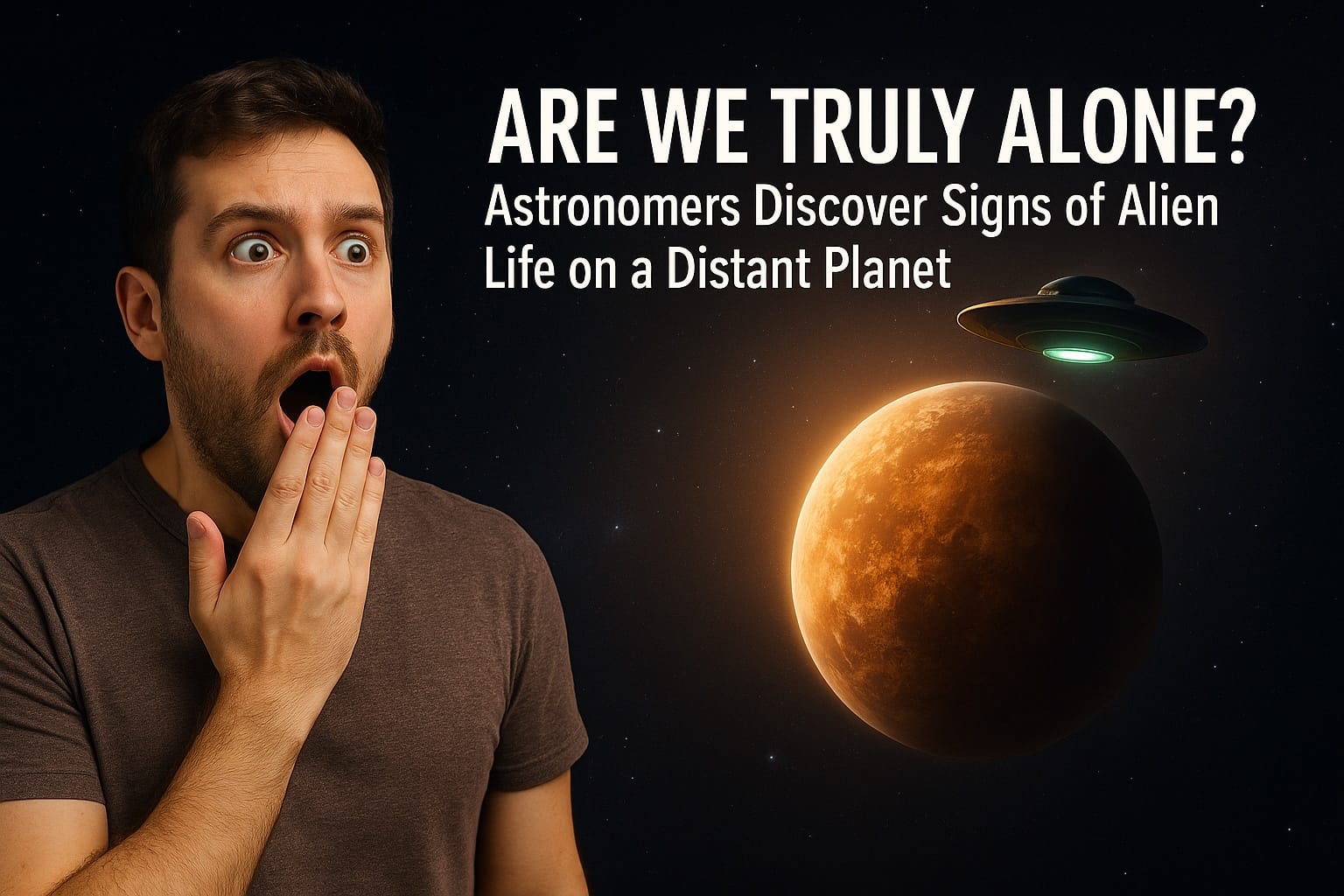Imagine: a world 120 light-years away from Earth, where deep blue oceans ripple, teeming with microscopic life. Is this a scene from a sci-fi movie? Not quite—it could be reality! In April 2025, the James Webb Space Telescope (JWST) detected chemical signatures in the atmosphere of a distant planet,
K2-18b, that on Earth are produced only by living organisms. This discovery has astronomers buzzing and raises the profound question: Are we truly alone in the universe? Let’s dive into the depths of this mysterious finding
READ ALSO The New AI War: Will Deregulation Shape the Future of Tech?
Signs of Life on K2-18b
Astronomers detected traces of two chemicals, dimethyl sulfide (DMS) and dimethyl disulfide (DMDS), in K2-18b’s atmosphere. On Earth, these compounds are produced by marine microorganisms like phytoplankton, making them “biosignatures”—indicators of life. Professor Nikku Madhusudhan from Cambridge University, who led the research, calls this a “revolutionary moment in the search for life
How was this discovery made? JWST analyzed the light from K2-18b’s star as the planet passed in front of it. As the star’s light filtered through the planet’s atmosphere, certain wavelengths were missing, revealing the presence of DMS and DMDS. This technique, known as the transit method, helps scientists understand the chemical composition of distant planets’ atmospheres
K2-18b: A Unique Hycean Planet
K2-18b is no ordinary planet. It’s 8.6 times more massive and 2.6 times larger than Earth. Located in the constellation Leo, it orbits within the “habitable zone” of its red dwarf star—the region where liquid water, essential for life, could exist. Scientists classify it as a “Hycean” planet, meaning it’s rich in hydrogen and potentially covered in vast oceans. Picture a world with deep oceans, a hydrogen-heavy atmosphere, and perhaps a thriving microbial ecosystem
Discovered in 2015 by NASA’s Kepler Space Telescope, K2-18b made headlines in 2023 when JWST found methane and carbon dioxide in its atmosphere—the first detection of carbon-based molecules in a habitable-zone exoplanet. Now, the discovery of DMS and DMDS has made it even more intriguing. But does this truly prove the existence of life?
Scientific Caution and Skepticism
While the discovery is thrilling, scientists remain cautious. The finding is at a “three-sigma” level, meaning there’s a 0.3% chance the signal could be a false positive. For scientific certainty, a “five-sigma” level (0.00006% chance of error) is required. Professor Madhusudhan notes, “We need to investigate whether these chemicals could be produced by non-biological processes.” For instance, some scientists suggest K2-18b might have oceans of magma rather than water
Astronomer Stephen Schmidt from Johns Hopkins University adds, “This is a clue, but we can’t yet say this planet is habitable.” Some experts propose that DMS could originate from comets or volcanoes, though such conditions would be unusual. Scientists are calling for more data collection and independent analysis to confirm the findings
What This Means for Humanity
This discovery has sparked excitement not only among scientists but also the public. If life is confirmed on K2-18b, it could fundamentally reshape humanity’s perspective. Dr. Robert Massey from the Royal Astronomical Society says, “This discovery will force us to rethink our place in the cosmos.” It could also unite us, proving we’re part of a vast cosmic tapestry.Are We Truly Alone? Astronomers Discover Signs of Alien Life on a Distant Planet
For India, this discovery holds special significance. Indian-origin scientist Nikku Madhusudhan is leading the research, and India’s astronomical legacy—from Chandrayaan missions to ancient astrology—makes this finding deeply relevant. Could we soon be saying “hello” to our cosmic neighbors?
Future Discoveries
This is just the beginning. JWST will now study other Hycean planets to determine if DMS-like signatures are common or unique. NASA’s plans, such as the Habitable Worlds Observatory, and the European Space Agency’s missions, like ExoMars, will accelerate the search for life. Professor Madhusudhan believes we could answer the question “Are we alone?” within the next one to two years,Are We Truly Alone? Astronomers Discover Signs of Alien Life on a Distant Planet
Conclusion: Toward a Vibrant Cosmos
The discovery on K2-18b has brought us to the threshold of a cosmic mystery, behind which the possibility of life may lie. This finding is an invitation—not just for scientists but for all of us—to look skyward, ask questions, and seek answers. Are we truly alone, or is the universe teeming with life? The answer may come sooner than we think. Until then, let’s revel in the thrill of this journey and await the day we can say, “Yes, we’ve found them

